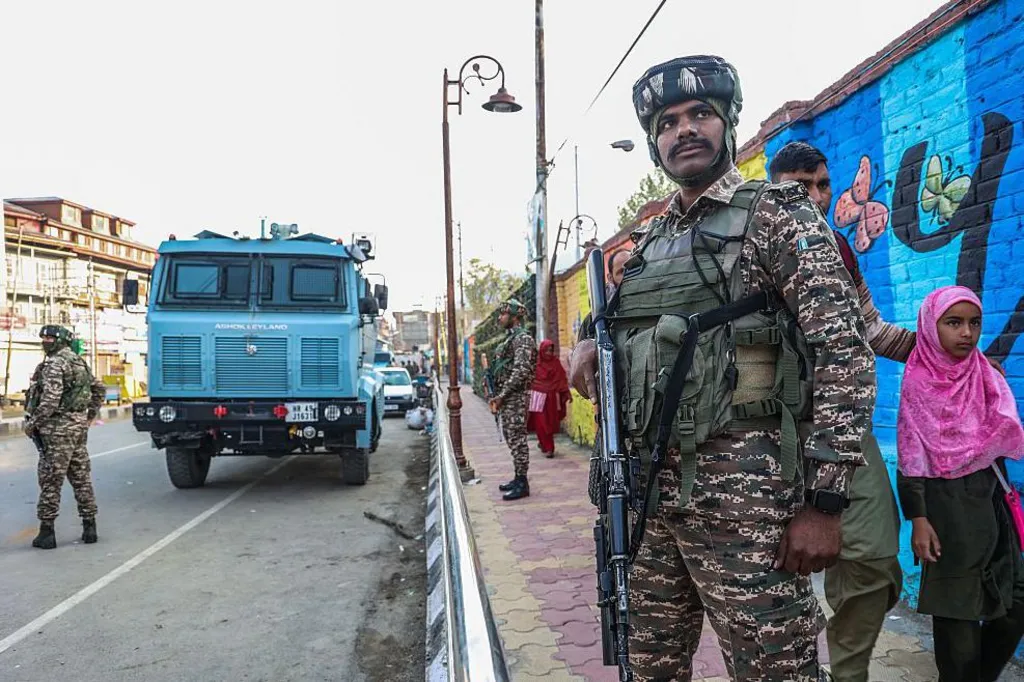Tuesday’s mass shooting in Pahalgam, which claimed the lives of at least 26 tourists, is the deadliest militant attack in Indian-administered Kashmir since 2019. Unlike previous incidents targeting military or security personnel, this assault struck civilians on vacation—turning a place known for peace and beauty into a scene of horror. The calculated nature of the strike threatens not only lives but the fragile sense of stability India has sought to build in the contested region.
Kashmir, long a flashpoint between India and Pakistan, is again at the heart of geopolitical tension. In immediate response, India has taken swift diplomatic and strategic actions: suspending the Indus Waters Treaty, shutting down major border crossings, and expelling Pakistani diplomats.
More crucially, Defence Minister Rajnath Singh has vowed a “strong response,” targeting both attackers and their alleged handlers. Experts say India’s reaction is likely to follow past precedent—airstrikes or cross-border raids—rather than restraint. Military historian Srinath Raghavan notes that the threshold for Indian retaliation has shifted significantly post-2016 and especially after the Balakot airstrikes of 2019.
Pakistan’s possible retaliation raises fears of escalation. Though both nations previously pulled back from the brink after intense confrontations, the current climate is tense. Analysts like Michael Kugelman warn that even a perceived link to Pakistani actors could trigger a military response from India.
As the LoC ceasefire established in 2021 hangs in the balance, the coming days may determine whether the region returns to conflict or finds a path back to cautious calm.
Experts believe India’s response to the Pahalgam massacre may be driven as much by domestic political pressures as by strategic imperatives. “The chief advantage of such a reaction for India would be political,” one analyst told the BBC, highlighting the intense public demand for a forceful response. A successful retaliation that neutralizes militant targets could also help re-establish deterrence and degrade immediate threats. However, the risks of escalation into a wider crisis or even conflict are significant.
India’s military options span a spectrum, each with distinct advantages and dangers. Covert operations offer deniability but might fall short of the visible action required to appease domestic sentiment. This leaves two primary, higher-profile avenues.
First, India may resume cross-border artillery or sniper fire, especially as the 2021 Line of Control (LoC) ceasefire has already been eroding. Second, India could undertake airstrikes or cruise missile attacks akin to its 2019 Balakot operation. Such moves carry clear risks, especially of tit-for-tat escalation.
Christopher Clary of the University at Albany notes that the current global context adds further uncertainty. With the U.S. preoccupied elsewhere, its role as a crisis manager between India and Pakistan may be limited. That makes the situation even more precarious.
The greatest underlying concern remains that both nations are nuclear-armed. This factor introduces a chilling restraint, yet also complicates strategic calculations. Military historian Srinath Raghavan notes that any Indian response is likely to be framed as “precise and targeted” to avoid provoking full-scale retaliation, while Pakistan may respond proportionally before seeking to de-escalate.
It’s a familiar but fragile playbook seen in other modern flashpoints, such as Israel-Iran confrontations. Yet history shows that even well-planned operations can spiral out of control, making the stakes exceptionally high in the tense subcontinental standoff.

Analysts say the Pulwama crisis of 2019 has set a precedent where both India and Pakistan appear comfortable with measured retaliatory exchanges. Michael Kugelman, a foreign policy expert, notes that while limited responses are now part of the playbook, India must still weigh the tactical benefits of military action against the looming risk of a broader conflict.
Former Pakistani ambassador to the U.S., Hussain Haqqani, suggests India may again opt for “surgical strikes” similar to those in 2016. These operations, while limited in scale, are designed to satisfy domestic demands for justice without necessarily triggering an overwhelming Pakistani response. However, Haqqani warns such moves could still provoke retaliation, especially if Pakistan perceives them as unjustified or politically motivated without concrete evidence.
Whatever India’s choice — covert actions, cross-border firing, or airstrikes — every option carries the potential for miscalculation. As tensions climb, the fragile peace in Indian-administered Kashmir becomes increasingly precarious.
At the same time, questions are growing about how such a devastating attack could happen during peak tourist season. Srinath Raghavan highlights this as a major intelligence and security lapse, especially given that law and order in the region is under direct federal control. This internal failure, alongside external threats, leaves India facing both strategic and political challenges as it formulates its next move.

